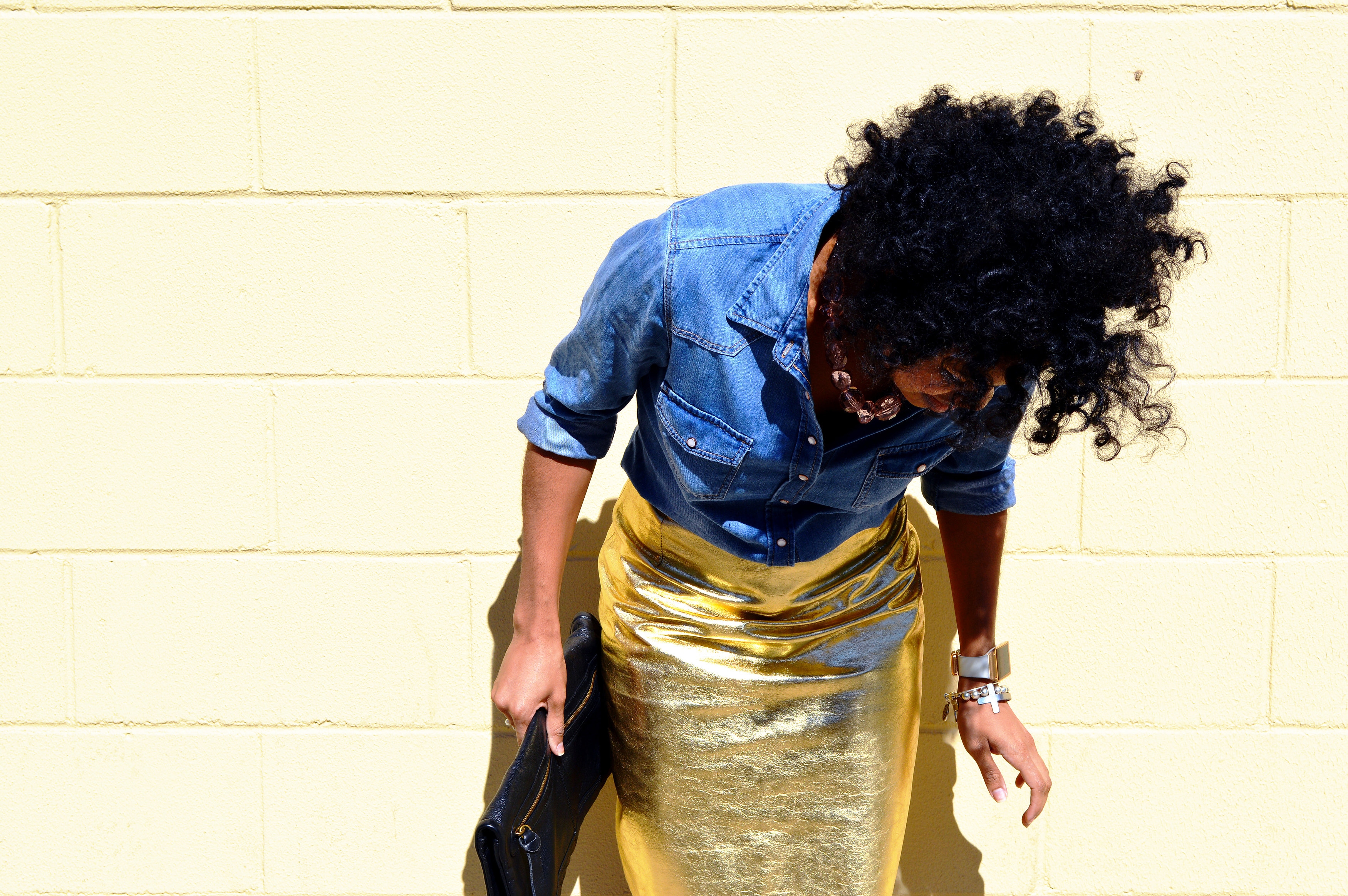What’s my hair type?
That’s one of the most common questions women who are new to natural hair ask themselves. I also get asked about my hair type pretty often. My answer? “It’s complicated.” The popularity of common hair typing systems has led many to believe that identifying your hair type is the first step to creating a healthy hair regimen. But how important is it really?
There are several hair typing systems, which are conveniently broken down and explained in this article. However, when first starting out, many women make the mistake of focusing primarily on curl patterns (3c, 4b, etc). I must admit, when I was first starting out, I made this mistake as well (guilty as charged!). No matter how many charts and pictures I looked at, I was never able to pick my own curl pattern out of a line up. It was frustrating. I eventually gave up trying to guess and focused on getting to know my hair better, including identifying other important qualities such as porosity and strand thickness, which I find to be much more helpful.
Below are a few pros and cons of hair typing:

Infographic Copyright: Big Hair Bigger Heart
Knowing your hair type (meaning, all the different categories it may fall into) can be helpful. However, when it comes to using hair types to set standards for your hair based on what works for other people, well, that’s where it gets a little tricky. The problem with following styling, hair care, and product recommendations from others is that unless you find someone whose hair fall into all the same categories as yours (porosity, strand thickness, curl pattern, density, etc), there is no guarantee that what works for that person will also work for you. And let’s face it: when seeking out recommendations, we are naturally inclined to go by what we see. In other words, we look to women whose hair looks like ours, which doesn’t tell the whole story. Someone could have the exact same curl pattern as you but their hair’s porosity and strand thickness may be different, so the same products that work for them may not work for you. Lisa over at Napturally Curly also outlines some of the downsides of hair typing here.

What IS my hair type?
My honest opinion? If you’re just starting out in the natural hair game, try not to rely too heavily on hair typing solely based on pictures of other ladies’ hair: ones you might see on social media for example. Ah, social media: it’s a gift and a curse. It’s a great tool for connecting with other people from all over the world. But among other issues, it also makes it way too easy to compare your journey to someone else’s. Here’s a quote that I’m sure you’ve heard before:
One reason we struggle w/ insecurity: we’re comparing our behind the scenes to everyone else’s highlight reel
Modern day cliche? Maybe. But it’s true. I see it all the time: ladies on Instagram lamenting under other people’s photos about how they wish they had hair like this person, or that their hair doesn’t do this or that. I get it. And I’ve been there too. But if you have this mindset, you’ll never be able to see the beauty in your own unique journey.
So, while I do think hair typing can be beneficial, it’s not the be all and end all. The best advice I can give to anyone trying to figure out their hair type for the sake of choosing the right products is this: get to know your hair. Experiment! Do your research – don’t just blindly follow someone else’s recommendations because they have nice hair.
Keeping a hair journal is an easy way to keep track of what products, ingredients, and techniques you use and how they make your hair feel. Be open-minded. Yes, it’s true that certain products are formulated to work best on certain textures, but that’s not always the case. And besides, we’re all just like snowflakes – no two heads of hair are exactly alike.
If you’re struggling to find a routine or products that work for you, feel free to use hair typing as a guide. But think of it more as a compass than a map – it can point you in the right direction, but it’s not a sure-fire route that will get you where you want to be.
And finally, for anyone who’s curious, I would categorize my hair as follows: medium strand thickness, high density, and low to normal porosity (varies based on different sections of my hair). I still haven’t figured out my curl pattern (there is more than one!) but I’d say it falls into the type 4 range.
What’s been your experience with hair typing? Has it helped you? Do you think it’s important? Let me know!
TOP IMAGE CO: CREATEHER STOCK





